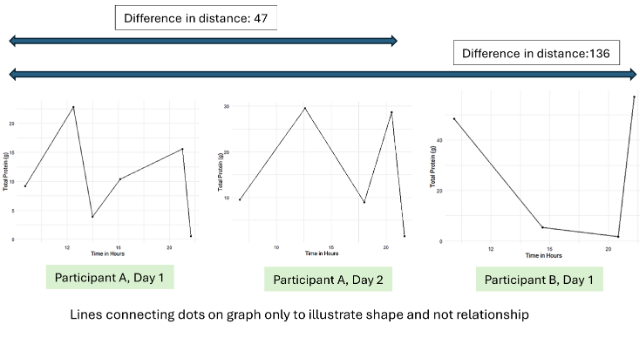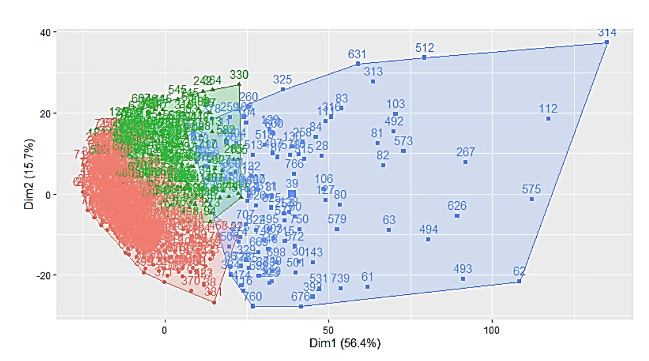
13 Sep Novel data-driven approaches for nutrition and sustainable diets – insights from the Nutrition Society Congress
The Irish section of The Nutrition Society hosted the inaugural Nutrition Society Congress at the beginning of July 2024, in Belfast, Northern Ireland. The conference placed emphasis on the pivotal role of data science in addressing challenges related to transforming the global food system and advancing the study of nutrition within the framework of sustainable and healthy diets. This Thought for Food gives an overview of some of the themes of the conference, and how SNi dietary research fits within these themes.
Implementing global food system transformation is widely recognised as an urgent measure to address issues related to population growth, unhealthy diets, resource and equity concerns. Data-driven approaches are diverse and span various areas of nutrition, from molecular studies of nutrients to public health systems focused on achieving sustainable and healthy dietary goals. Novel tools in data science can contribute to research areas in nutrition science, such as in the collection of food records, nutrient intake analysis, big data management and nutritional epidemiology.
One example is the use of Machine Learning (ML) algorithms that study patterns in compiled datasets consisting of dietary habits, anthropometric measurements, and gut microbiome to predict physiological responses in the field of precision nutrition. Another example is the use of technologies at a food production level for soil and grassland management, and Life Cycle Analysis (LCA) to spot opportunities to reduce emissions while promoting increased yield.
Application of novel tools for data analysis
While we observe an increase in calories per capita globally, access to certain foods remains unequal across different populations. Through descriptive time series analysis – a technique for identifying patterns or trends over specific time intervals, this study, found misalignment between national food supply and dietary guidelines over five decades. This was more prominent for fruit and vegetables, and red and processed meats with potential inequities in global food distribution that varied by region and country income. This highlights a challenge in achieving sustainable and healthy food systems, which could not be seen without models that utilise reliable global food system datasets.
The underlying data used within the field of nutrition is complex and multi-dimensional –meaning only a fraction of its potential has so far been explored. Machine Learning (ML) could offer a more intuitive method than traditional statistics for learning and processing unstructured dietary data and identifying intricate patterns. For example, ML techniques could improve food diaries, automate classification of food items to groups, and integrate various nutritional, metabolic and epidemiological datasets to attain results not possible with any single dataset. ML can also be valuable in assessing differences between and within individuals, providing insights to develop more effective population-based or individualised intervention strategies.
SNi research is using ML techniques to study how protein and amino acid intakes vary over the course of a day in a group of New Zealand vegans. Data was collected from food diaries and protein intake was tracked across the day. To understand dietary patterns, a time series analysis method called Dynamic Time Warping (DTW) was used to measure the difference in intake patterns between individuals. Figure 1 illustrates an example, showing that the dietary pattern of participant A on day 1 was more similar to their dietary pattern on day 2 than it was to the dietary pattern of participant B.

We then grouped these patterns into three dietary pattern clusters (Figure 2) with a ML technique called hierarchical clustering and represented the daily diary entries using multi-dimensional scaling. Which cluster a diet appeared in depended mostly on total protein intake and meal frequency.

While intake-per-day analysis is currently the predominant approach in nutrition research, food consumption patterns throughout the day vary, with important implications. A previous Thought For Food explained the importance of balanced meals in nutrient utilisation. While individuals may have the same overall daily nutrient intake, quantities of nutrient intake may not reach sufficient levels in meals to achieve full benefit. This is more of a concern for nutrients that cannot be stored within the body between meals (e.g., essential amino acids). A meal-based approach in nutrition research provides the opportunity to understand how ingredient combination and the food matrix within a single meal affects the overall diet quality. This could be more relevant to individuals on restrictive diets or vulnerable populations who would benefit from using all eating occasions in the day to achieve optimal nutrient intake.
Using ML allows us to reduce high-dimensional food consumption data and group similar dietary patterns using an unbiased approach and compare nutrient profiles across meals. This could be a key step in developing dietary interventions or guidelines at the meal level.
Challenges and good practices in Machine Learning
Quality data collection and data processing are crucial for the accuracy of generated results. ML offers versatility in compiling disparate data from multiple sources. However, it is important to recognise the right contexts to apply ML. Data can have bias and errors and this will follow through to the calculations and subsequent results. Data imputation and normalisation may be key steps to reconcile heterogenous data, especially in food composition databases that vary in quality and method of collection. Understanding how results change in different subsets of the data is another way to evaluate model performance. While offering promising advances in nutrition research, it is important to consider the limitations when applying ML techniques and ensure that the generated models are interpretable, reproducible and validated.
High quality data for evidence-based nutrition science
Integrating and transforming big data into actionable evidence for policy and practice is currently lacking in nutrition research. High-quality data is essential at each level of the food system, from food production, to processing, retail, consumption and waste. Novel technologies and assessment tools could offer ways to measure these various aspects of sustainable diets. For example, wearable technology has been used in crowdsourcing research that enhances population engagement, improves misreporting and redirect dietary behaviour at the consumption, retail and household level. ML has become beneficial in improving food data compositions by helping researchers keep up with changing food formulations and introduction of novel processed foods. ML has also been integral in supplementing existing methods in nutritional epidemiology to understand the complex interaction between nutrition, disease and health. Achieving sustainable and healthy diets is an urgent goal to establish food security and diets that are culturally-appropriate, economically and environmentally-friendly and data science is here to help.
This Thought for Food was written by Patricia Soh, a PhD Fellow in the SNi team.





